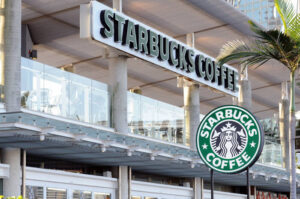Starbucks: Navigating Declines to Find New Growth Opportunities
At Extreme Investor Network, we understand that the stock market’s pulse often beats louder when major companies like Starbucks share their financial results. As we dive into Starbucks’ recent performance, we’ll explore the challenges they face and the paths they are carving out for future growth.
U.S. Operations See Initial Declines, but Hope is on the Horizon
Starbucks recently reported a 4% decline in U.S. same-store sales, primarily driven by an 8% drop in customer traffic. This decline may sound alarming, but let’s look deeper. Under the leadership of new CEO Laxman Narasimhan, who pledges to revitalize the Starbucks experience, we are witnessing various strategic reforms aimed at reinvigorating the brand.
Narasimhan has made significant strides to return the company to its coffee-centric roots. By simplifying menu offerings, expediting service processes, and eliminating extra charges for nondairy milk alternatives, the customer experience is gradually improving. The early signs of these changes are positive; after these announcements, we saw shares of Starbucks rise nearly 4% in after-hours trading. Investors seem to be embracing the notion that the sales decline, while concerning, may not be as severe as initially feared and that a turnaround could be underway.
Key Takeaway for Investors:
While short-term declines can stoke anxiety, structural transformations and renewed focus can provide a compelling rationale for long-term investment, especially in iconic brands like Starbucks.
Competitive Challenges in China: More than Just Pricing Wars
As the coffee giant navigates challenges at home, its second-largest market—China—continues to present tough conditions. Recent reports indicate a 6% drop in same-store sales in this market, punctuated by a 4% fall in average ticket prices. To combat intense competition from rivals like Luckin Coffee, Starbucks is relying heavily on discounts to attract customers. While discounts can fuel short-term traffic, they may also erode brand value.
This recent struggle underscores a critical point: in an era of increasingly savvy consumers, brands need to balance competitive pricing with maintaining a premium experience. Maintaining customer loyalty in such a fiercely competitive landscape will require more than just discounts.
Unique Insight for Investors:
Think about the long game. While discounts might lift immediate traffic numbers, consider how they impact long-term brand loyalty and pricing strategies. Companies that can innovate beyond pricing strategies often yield better returns for investors.
Corporate Restructuring Amid Labor Issues
To manage these challenges, Narasimhan has implemented a radical overhaul of Starbucks’ corporate leadership. This includes the introduction of executives with robust operational experience from Taco Bell, designed to streamline processes and foster growth. However, it’s not all smooth sailing. Labor tensions are palpable, particularly amid ongoing union negotiations and recent strikes at 300 locations during peak months.
Strikes not only disrupt operations but can also tarnish a brand’s image. Therefore, resolving these labor disputes amicably is vital for the company as they work to rejuvenate their workforce during this critical transition period.
Investment Perspective:
Focus on management strategies dealing with labor relations. A company that values and fosters positive employee relations can mitigate risks related to strikes and enhance its reputation in the labor market, leading to better long-term resilience.
Market Outlook: A Cautious Optimism
As Starbucks seeks to navigate through troubled waters, we at Extreme Investor Network advise a careful analysis of their adaptive strategies. Although the stock market can be as volatile as a double shot of espresso, companies that demonstrate a clear plan for turnaround amid adversity often find favor with investors looking for growth opportunities in recovering markets.
In conclusion, while Starbucks faces significant hurdles, there’s a palpable energy around its strategic initiatives. The tumultuous path of restructuring and redefining consumer experience could very well position Starbucks for a rebounding trajectory in the near future. Keep an eye on these developments, as they may offer unique entry points for savvy investors looking to capitalize on market swings.
Stay updated with us at Extreme Investor Network for deeper insights and expert analysis that can help you make informed decisions in the world of investing.

